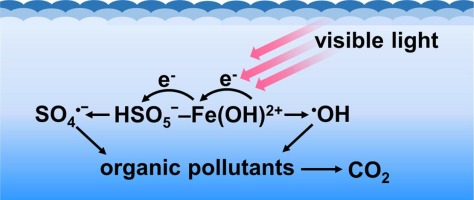Publication
Advanced Redox Technology Lab
Publication
Advanced Redox Technology Lab
Journal papers
A new method for the activation of peroxymonosulfate (PMS) using ferric ions (Fe3+) and visible light (λ > 420 nm) was developed and investigated as a water treatment method for the degradation of various organic pollutants. Complete degradation of 100 μM of 4-chlorophenol (4-CP) was achieved after 60 min in the presence of PMS (1 mM) and Fe3+ (1 mM) under visible-light irradiation. However, the degradation of 4-CP was negligible or minor in the absence of either PMS, Fe3+, or visible-light irradiation. The visible-light absorption of Fe3+ was enhanced through complexation with PMS (HSO5−−Fe(OH)2+), although PMS itself does not absorb visible light. Inner-sphere electron transfer in the HSO5−−Fe(OH)2+ complex under visible light generated sulfate (SO4 radical dot−) and hydroxyl radicals (radical dotOH). The production of SO4 radical dot− and radical dotOH in the PMS/Fe3+/visible light system was verified by electron paramagnetic resonance (EPR) spectroscopy and fluorescence spectroscopy. The degradation of 4-CP was significantly reduced with isopropyl alcohol (as a scavenger for both radical dotOH and SO4 radical dot−), but only slightly reduced with tert-butyl alcohol (as a radical dotOH scavenger). This behavior suggests that SO4radical dot− acts as a primary oxidant in the PMS/Fe3+/visible light system. The PMS/Fe3+/visible light system efficiently degraded a wide spectrum of organic pollutants (e.g., 4-CP, bisphenol A, 2,4-dimethylphenol, furfuryl alcohol, sulfamethoxazole, tryptophan, and sulfanilamide). In addition, the degradation efficiency of the PMS/Fe3+/visible light system remained constant over multiple cycles with the intermittent addition of PMS only.
